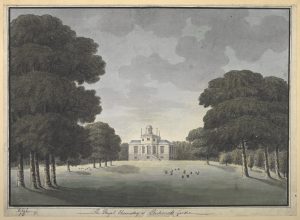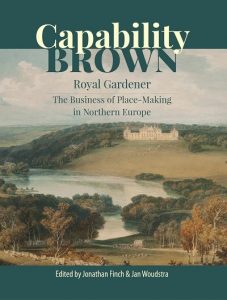New Book: Capability Brown, Royal Gardener: The Business of Place-Making in Northern Europe

The Royal Observatory in Richmond Gardens, John Spyers (attributed), 1778–90 © British Library. Public
Jonathan Finch and Jan Woudstra (eds.)
White Rose University Press 2020
Language: English
Pages: 240
Lancelot “Capability” Brown was one of the most influential landscape designers of the eighteenth-century at a time when Britain was changing radically from an agrarian to an industrial and colonial power, whilst continental Europe was periodically convulsed by war and revolution. The extent and nature of his influence are, however, fiercely debated.
This important new volume is the first publication since the tercentenary celebrations of his birth in 2016, and takes Brown’s neglected role as royal gardener for its starting point and explores Brown’s business methods, working method, contemporaries, collaborators and European influence.
Edited by Professor Jonathan Finch and Dr Jan Woudstra, it brings together for the first time a number of perspectives from a varied range of engaging authors, with contributors drawn internationally from archaeology, art history, history and landscape architecture – from scholars and expert practitioners.
It provides new insights into both Brown and his career, as well as shedding new light on his landscape practice, his way of working, in a national and international context.
Professor Jonathan Finch explains,
“In this book we explore Brown’s career, placing him within the world of nurserymen and landscape designers, and his practice of recruiting and retaining a well-paid circle of workmen, draughtsmen and designers, allowed him to manage a huge number of projects and a substantial financial turnover. A key component of his career and reputation was grounded in his position as royal gardener, something which has perhaps been neglected. The English landscape garden, with which he was so closely associated, continued to influence landscape aesthetics and design well into the 19th century across Northern Europe.”
Capability Brown, Royal Gardener weaves together strands from across a broad range of disciplinary interests. It makes an important new contribution to the scholarly discussion of Brown’s work and legacy. Relevant to students and academics at all levels, as well as to practitioners and anyone interested in Capability Brown and his landscapes, this volume brings new perspectives on Capability Brown the man, and on his impact on the business of place-making, not just in Britain but across Northern Europe.
Dr Jan Woudstra adds,
“Brown is unusual as he was feted in his time and recognised by the Crown. However, his style was readily copied over his later life and, particularly, after his death. Arguably this ubiquity led to the denigration of his achievements and even his character, particularly by the agents of the Picturesque. He has been characterised as a destroyer of earlier landscapes, while the lack of any primary material from Brown himself has hindered attempts to provide a rounded and credible account of the man and his works. Here, by exploring his practices, associates, collaborators, and his role as Royal Gardener, new light can be thrown on the man, his landscapes and his landscape legacy”.
Importantly, the book is available as an Open Access (OA) work, free to read online or download from the White Rose University Press website, with print copies also available to buy through the print on demand ordering service. This is one of the first OA publications of this scale in this field, opening up the groundbreaking scholarship within and making it accessible to everyone – scholars and practitioners alike – without any financial barrier. In publishing the book in this way, Finch and Woudstra, and their contributors, are in the vanguard of the OA movement, contributing to a growing pool of high-quality open academic content.
Download Free from: https://universitypress.whiterose.ac.uk/site/books/e/10.22599/CapabilityBrown/
Cover Illustration: Harewood House from the south, J.M.W. Turner, 1798. Reproduced by courtesy of the Harewood House Trust.
